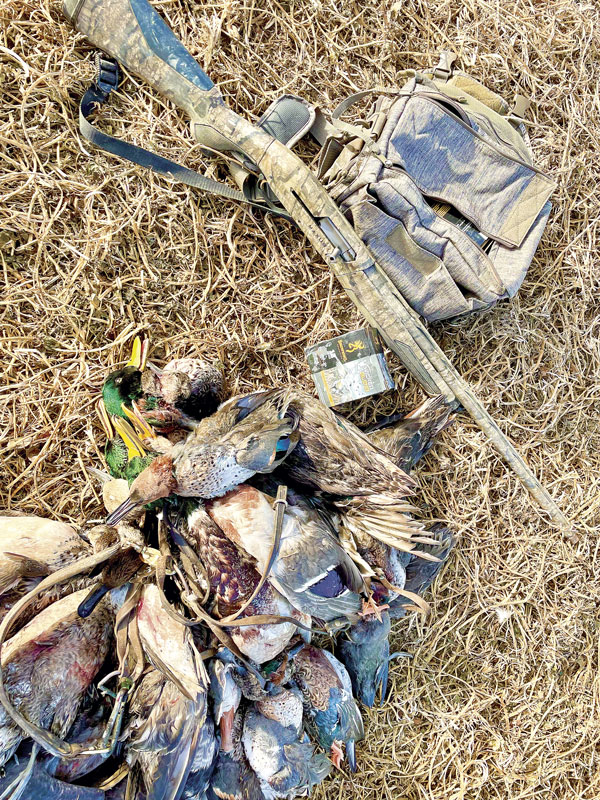 Louisiana has the habitat; now it just depends on the ducks
Louisiana has the habitat; now it just depends on the ducks
Louisiana’s Wildlife Management Areas in seven regions across the state offer first-rate duck hunting success based on favorable conditions and, as biologists on each area agree, if the ducks actually funnel down the Mississippi Flyway.
Duck hunters, naturally, hope for both when the season gets underway Nov. 12 in the West Zone and Nov. 19 in the East Zone. Providing a good number of ducks make their way this far south, the prime public areas to hunt are Atchafalaya Delta WMA in the Coastal Lafayette region, Boueuf WMA in the Monroe Region and Dewey W. Wills WMA in the Pineville Region.
Those three WMAs turned in some eye-opening duck harvest numbers last season: Atchafalaya Delta WMA reported 4,879; Bouef WMA reported 2,930; and Dewey W. Wills WMA reported 2,714.
The big question: How many ducks are available to migrate?
The preseason waterfowl population numbers report released Aug. 20 by the U.S. Fish and Wildlife Service indicated there are fewer mallards, gadwall, widgeon, green-winged teal, shovelers, pintails and canvasbacks for the upcoming fall flight than at the same time in 2019.
Because of coronavirus restrictions, that was the last year the Waterfowl Population and Habitat Survey was conducted from Alaska’s Seward Peninsula to Newfoundland and south to near the Nebraska-South Dakota border.
The USF&WS reported the spring breeding population index at 34.2 million ducks, 12 percent lower than the 2019 estimate of 38.9 million ducks and 4 percent under the long-term average since 1955.
Hopefully, many of the ducks counted earlier this year fly this way and are fair game for duck hunters who enjoy hunting public land. Following is an update on WMAs in the Sportsman’s Paradise.
Hammond Region
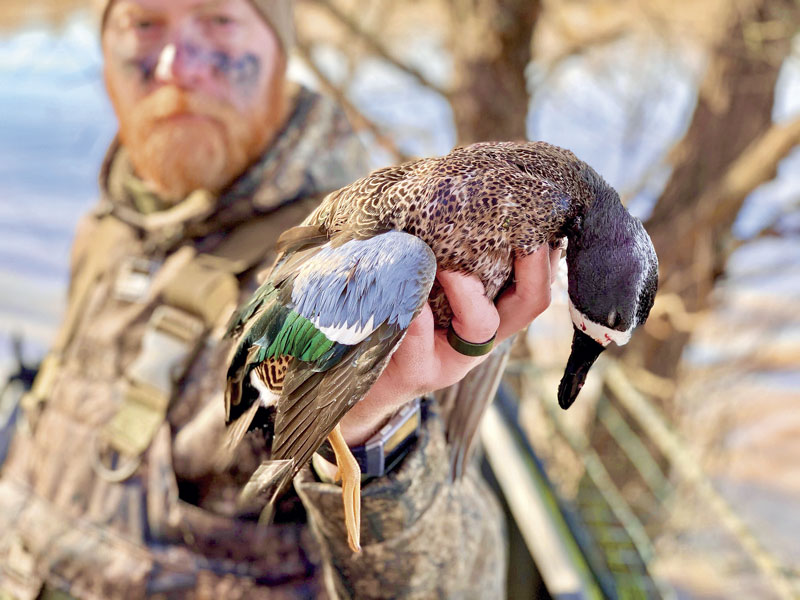
Top WMA Waterfowl Harvest Numbers for 2021-22
Pearl River WMA: 2,353 ducks reported, 0.9 ducks per hunter effort
Maurepas Swamp WMA: 2,598 ducks reported, 1.4 ducks per hunter effort
Biloxi WMA: 719 ducks reported, 2.5 ducks per hunter effort
Manchac WMA: 468 ducks reported, 1.1 ducks per hunter effort
One of the traditional three top Wildlife Management Areas for duck hunting harvest each year in the Hammond Region hardly came into play for waterfowlers in 2021-22.
According to Bradley Breland, biologist supervisor for the Hammond Region since 2018, duck hunters faced extremely limited access to Manchac WMA during most of the early season because Galva Canal was plugged with debris from Hurricane Ida that smashed into southeast Louisiana on Aug. 29.
However, Breland noted in his report, there was a silver lining for Manchac WMA. And that bodes well for 2022-23.
“One positive result of the hurricane was the flushing of the giant salvinia and water hyacinths that tend to shade out the desirable submerged aquatic vegetation that provides forage for waterfowl species,” he noted in his report the first week of August.
Duck hunters downed 468 ducks, or 1.1 ducks per hunter effort last season at Manchac WMA compared to 1,046/0.8 in 2020-21.
Pearl River WMA’s duck harvest of 2,353 ducks led the way in the region in 2021-22. The area has beaucoup waterfowl habitat that translates into fair to good duck hunting success every season, barring tropical storm activity. The brackish marsh is full of SAV, such as widgeon grass, that serves as a major forage source.
Pearl River WMA is split into zones, Breland wrote. South of U.S. 90 is in the western zone and is predominantly where the bulk of successful waterfowl hunting occurs on the WMA, he pointed out.
Gadwall and green-winged teal are the most common species harvested on Pearl River WMA, Maurepas Swamp WMA, Manchac WMA and Biloxi WMA.
Lafayette Region
Top WMA Waterfowl Harvest Numbers for 2021-22
Spring Bayou WMA: 2,323 ducks reported (1.6 ducks per hunter effort)
Richard K. Yancey WMA: 1,212 ducks reported (1.0 ducks per hunter effort)
Sherburne WMA: 779 ducks reported (0.72 ducks per hunter effort)
Consistently high duck harvests over the years make Spring Bayou WMA the seasonal go-to place for waterfowlers in the Lafayette Region.
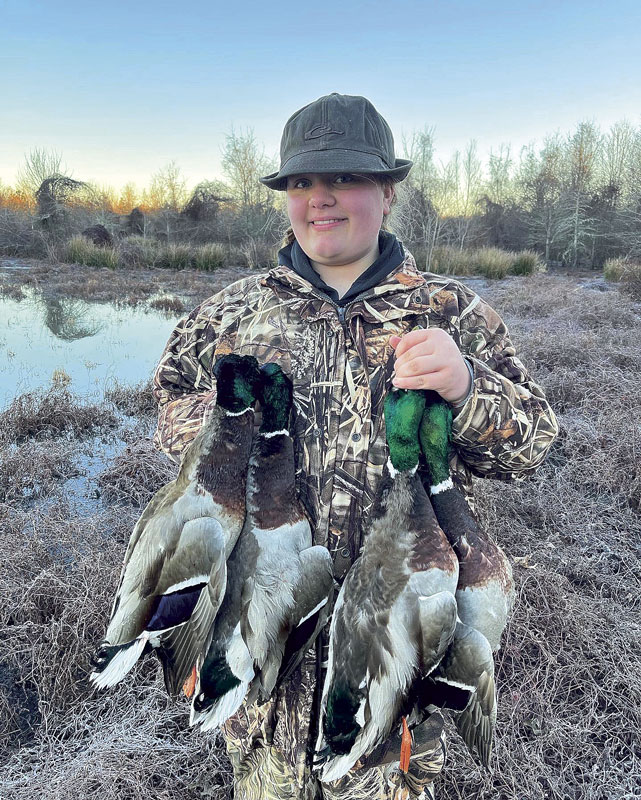
Based on preseason conditions, don’t rule out any of the other top duck-hunting WMAs in the region — Richard K. Yancey WMA and Sherburne WMA. As of late August, persistent drought conditions were a thing of the past.
“After a very dry spring (and early summer), we have gotten plenty of rainfall during the growing season,” Tony Vidrine reported. “So waterfowl food production has been very good. If the ducks show up, the hunters should have a good season.
“Those WMAs that did good last year and normally do good every year should have a good waterfowl season again this year. Food production is good on all of the region WMAs.”
Lack of rain had its upside, though, the veteran biologist manager noted, because it allowed him and his staff to get a head start this summer to manage those areas for desirable vegetation/conditions for 2022-23.
Duck hunters who frequented Spring Bayou WMA in 2021-22 killed 2,323 ducks with 1.6 ducks per hunter effort. The lake area usually gives up most of the ducks, predominantly blue-winged teal, green-winged teal, wood ducks and gadwall.
Richard K. Yancey WMA’s 2021-22 harvest of ducks totaled 1,212 with 1.0 ducks per hunter effort. Duck hunters who hunt along the river often had the most success.
The South Farm on Sherburne WMA has prime vegetative growth (duck foods) due to biologists’ efforts on the units during the growing season. Waterfowl hunting there should be improved over the past few seasons, if the ducks show up.
Also, Vidrine pointed out, the des Ourses swamp area inside Sherburne WMA should have fair water conditions that appeal to ducks and duck hunters.
Sherburne WMA’s duck harvest last season was 779 with an 0.72 duck per effort.
Lake Charles Region
Top WMA Waterfowl Harvest Numbers for 2021-22
Sabine Island WMA: 18 ducks reported, 41 hunter efforts (1 duck per 2 hunter efforts)
Peason Ridge WMA: 17 ducks reported, 5 hunter efforts (3 duck per hunter effort)
West Bay WMA: 8 ducks reported, 16 hunter efforts (1 duck per 2 hunter efforts)
Clear Creek WMA: 6 ducks reported, 8 hunter efforts (1 duck per hunter effort)

The Lake Charles Region is what it is and what it is is mostly an upland big game public hunting area with fewer waterfowl opportunities.
“We have more deer, turkey and small game opportunities than we have for waterfowl opportunities,” Wendell Smith, the region’s biologist manager 15 years with LDWF, reported.
Last season’s duck harvest numbers on the top WMAs reflect that statement. Sabine Island’s 18 ducks in 41 hunter efforts were the most downed in the region, followed by 17 in five hunter efforts on Peason Ridge WMA; 8 in 16 hunter efforts on West Bay WMA, and six in eight hunter efforts on Clear Creek WMA.
However, Smith has noted in the past, the wood duck hunting is a plus on Sabine Island WMA. Ridges with sloughs surrounding them offer feeding places for wood ducks.
“Occasionally another species of waterfowl will be taken but for the most part it’s wood ducks. Wood ducks feed in the sloughs and sometimes can be taken when they take flight,” Smith said.
Sabine Island WMA, actually two islands, is accessible only by boat. The 33-year veteran biologist cautioned duck hunters that the WMA is tidal-influenced. They must be cognizant of that if they travel up a bayou when the water’s high because their boat could be high and dry when they return at low tide.
Minden Region
Top WMA Waterfowl Harvest Numbers for 2021-22
Bodcau WMA: 961 ducks reported, 949 hunter efforts (1 duck per hunter effort)
Loggy Bayou WMA: 236 ducks reported, 175 hunter efforts (0.74 ducks per hunter effort)
Soda Lake WMA* : 120 ducks reported, 43 hunter efforts (2.8 ducks per hunter effort)
* Portion east of Twelve Mile Bayou only
The Louisiana Department of Wildlife and Fisheries opened the portion of Soda Lake WMA east of Twelve Mile Bayou to waterfowl hunting in 2021-22.
Jeff Johnson, Minden Region biologist supervisor since 2007, was pleased with the results, as were waterfowlers who took the time and trouble to hunt it.
“I can’t speak on it historically because last year was the first season it was open but it was pretty good hunting for those that gave it a try,” Johnson wrote in his report.
How good? That portion of the area gave up 120 ducks in 43 hunter efforts, or 2.8 ducks per effort.
Johnson pointed out the area to duck hunt is hard to access, so the long walk probably kept the duck hunter efforts and duck hunting pressure down somewhat.
Duck hunters who want to meet the challenge could do as well or better this season with a visit to that portion east of Twelve Mile Bayou.
Otherwise, Bodcau WMA and Loggy Bayou WMA are the top two areas for successful duck hunting year-in and year-out. Wood ducks, mallards, teal and gadwall are the main species that frequent all three WMAs.
Johnson noted that wood duck hunting is best early in the morning on each of the WMAs, which close to hunting at 2 p.m. When the other ducks are down in decent numbers, there’s often more action later in the morning.
Some of the best waterfowl hunting is any time following a cold front that brings new ducks into the areas.
Monroe Region
Top WMA Waterfowl Harvest Numbers for 2021-22
Boeuf WMA: 2,930 ducks reported, (1.44 ducks per hunter effort)
Russell Sage WMA: 1,562 ducks reported, (1.43 ducks per hunter effort)
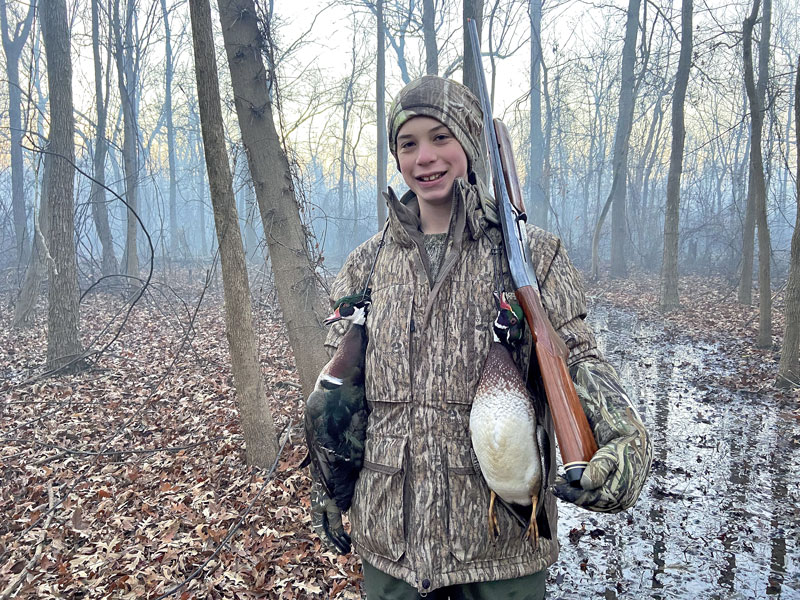
Monroe Region biologist supervisor Mitch McGee knows prime duck habitat on two of the region’s most productive WMAs makes all the difference in the world for waterfowl hunting success in the Sportsman’s Paradise.
Boeuf WMA and Russell Sage WMA, which combined feature more than 13,000 acres of diverse waterfowl habitat, have what waterfowlers — and ducks — are looking for with natural sloughs, swamps, moist soil management units as well as a greentree reservoir on the former and the same features, plus flooded agricultural fields, on the latter. Those WMAs gave up nearly 3,000 and 1,500-plus ducks, respectively, in 2021-22.
Duck hunting success could be even better this season when one considers Russell Sage WMA’s habitat depends on the water level in the Bayou Lafourche Canal. The LDWF staff was unable to pump most of the areas, which shifted management to make last year a “dry” year.
“This year we will be back on schedule to pump those areas once Bayou Lafourche has reached the desired level,” McGee wrote in his report June 21.
“Boeuf WMA was able to pump last year but the lack of rainfall did make the task take much longer than normal. Areas that normally have water for the first split did not have the water most hunters are accustomed to,” he said.
Expect to see nearly all of the species that travel the Mississippi Flyway, but a majority of the birds shot in the region are wood ducks, green-winged teal, gadwalls and mallards, according to McGee. On Russell Sage WMA, Wham Brake’s 4,000 acres historically have given up half of the area’s waterfowl harvest.
The biologist supervisor noted that the first hour of the legal shooting period historically is the best time to hunt those areas. But that can change when hunting pressure and activity levels on surrounding areas ratchet up notch by notch, he said.
Naturally, early season hunts are rewarding but the second and third splits can be as good or better depending on conditions in the northern Mississippi Flyway.
Pineville Region
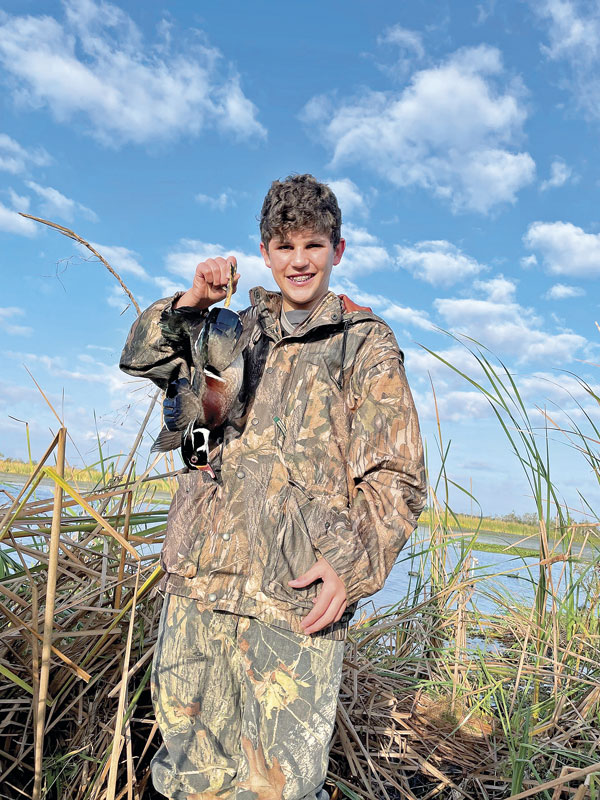
Top WMA Waterfowl Harvest Numbers for 2021-22
Dewey W. Wills WMA: 2,714 ducks reported (1.3 ducks per hunter effort)
Alexander State Forest WMA: 63 ducks reported (0.7 ducks per hunter effort)
This 63,984-acre WMA in LaSalle, Catahoula and Rapides parishes is the go-to public area to kill ducks in the Pineville Region.
No one knows that better than Cliff Dailey, a 13-year veteran biologist who reported the sprawling Dewey W. Wills WMA gave up 2,714 ducks in 2021-22. It’s no surprise it’s his top pick for waterfowl hunting for the upcoming season as it’s typically loaded with wood ducks, gadwalls, blue-winged teal, green-winged teal and mallards, especially during late winter in the second split.
“Temperatures and availability of floodwater is usually more favorable later in the season. Hunters should be set up by shooting time (30 minutes before sunrise) and try to hunt until at least 9 a.m. The wood duck flight will last about 20 minutes followed by arrival of the remaining dabbler species,” Dailey said.
He reminded duck hunters they must be off the area before 2 p.m.
Mother Nature may have helped with a growing threat to quality habitat — giant salvinia, he noted. Drought conditions in May-June dried out many intermittent sloughs, thus killing some of the giant salvinia.
“I anticipate fall rains refilling these areas and providing quality open water habitat for waterfowl when they arrive,” he said.
Dailey pointed out that Alexander State Forest, where 63 ducks were killed last year, offers prime duck hunting opportunities in the Indian Creek Reservoir. Wood ducks, green- and blue-winged teal, mallards and hooded mergansers frequent the area if they’re down.
He recommended using a kayak or pirogue to put out decoys because of deep water and advised the use of a retrieving dog.
Coastal Lafayette Region
Top WMA Waterfowl Harvest Numbers for 2021-22
Atchafalaya Delta WMA: 4,879 ducks reported, 1,771 hunter efforts (2.75 ducks per hunter effort)
Pass-a-Loutre WMA: 2,144 ducks reported, 463 hunter efforts (4.63 ducks per hunter effort)
Pointe-aux-Chenes WMA: 662 ducks reported 467 hunter efforts (1.42 ducks per hunter effort)
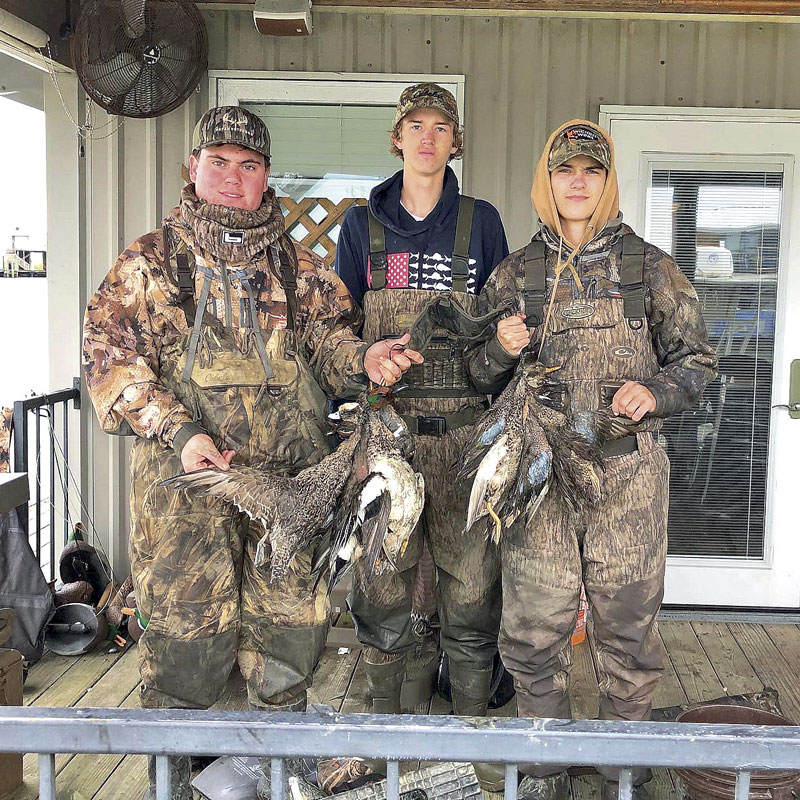
As challenging as post-Hurricane Ida conditions were in 2021-22 on some Wildlife Management Areas in the Coastal Lafayette Region, Atchafalaya Delta WMA and Pass-a-Loutre WMA still delivered.
The number of ducks bagged on those two WMAs was impressive despite fewer hunter efforts in the wake of Ida. The Atchafalaya Delta WMA’s 4,879 ducks were the most harvested in the region last season compared to 7,134 in 2020-21. Pass-a-Loutre WMA’s 2,144 ducks were the second-most bagged in the Lafayette Region compared to 2020-21’s 4,195.
Vaughan McDonald, the region’s biologist manager and an 18-year veteran with LDWF, expects as many or more ducks to be killed this season on those two WMAs, particularly the Atchafalaya Delta WMA.
“Atchafalaya Delta WMA is looking really good in regards to waterfowl habitat and forage and we expect to have a season on par with last year’s season, provided waterfowl migrate to the area,” McDonald wrote in his report.
Pass-a-Loutre WMA was among the three most hurricane-ravaged WMAs in the region in August 2021.
“Hurricane Ida negatively impacted Pointe-aux-Chenes, Salvador/Timken and Pass-a-Loutre WMAs in 2021,” McDonald said. “All three of those had significantly lower participation during the 2021-22 hunting season and, with the exception of Pass-a-Loutre, success also was down likely due to habitat impacts with Hurricane Ida. We are expecting to see somewhat of a rebound in success on those areas this year barring any storm events.”
Blue-winged teal, green-winged teal and gadwall are the most common ducks in the region. Based on past experience, Pass-a-Loutre WMA’s best hunting typically is better toward the end of the first split and early in the second split. Atchafalaya Delta WMA and Pointe-aux-Chenes WMA duck hunting can be good throughout the season, but typically the first split is best.


